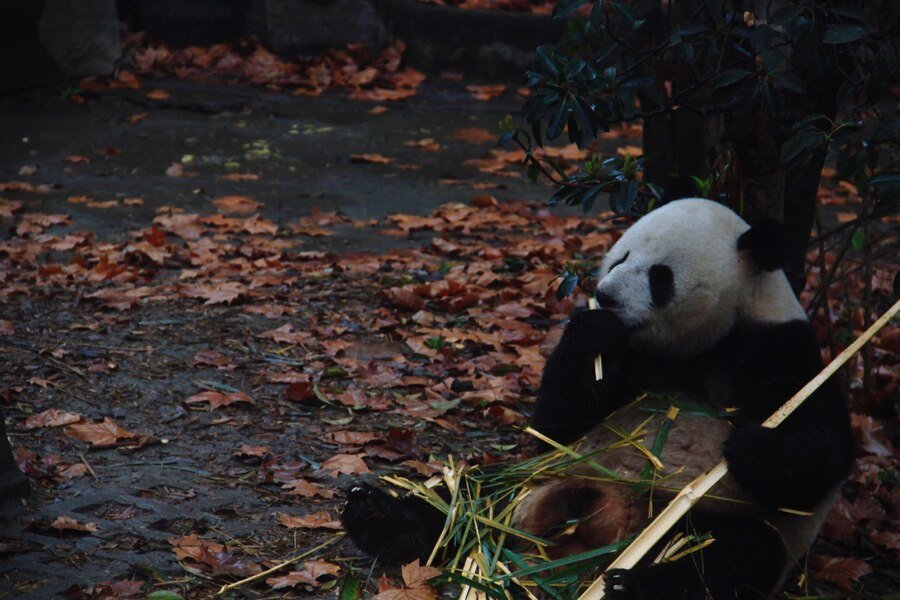The lush, sprawling expanse of the Yangtze Basin once resonated with the gentle rustlings of pandas, an emblematic symbol of China’s rich wildlife. These bamboo munchers found their perfect sanctuary amid the verdant landscapes and abundant resources of the Basin. However, nature’s harmony was disrupted as human activity crept into their paradisiacal haven, forcing pandas out of their ancestral habitat. This blog explores the fascinating history of the Yangtze Basin, the adversity faced by pandas, and the ongoing efforts to restore this majestic species to its rightful home.
The Yangtze Basin’s Role in Panda Habitat
The Yangtze Basin, often referred to as the cradle of Chinese civilization, is more than just a geographical marvel. It was once a thriving habitat for the giant panda, one of the world’s most treasured animals. A region known for its diverse ecosystems and rich biodiversity, the Yangtze Basin provided everything a panda could ask for—ample bamboo forests, a mild climate, and natural protection from predators.
Spanning over 700,000 square miles, the basin is home to the longest river in Asia, the Yangtze River. Historically, this region supported a wide array of flora and fauna, making it a crucial biodiversity hotspot. Despite the ecological wealth, the basin was also a prime target for human settlement and industrial development, setting the stage for future challenges.
Pandas in the Yangtze Basin Through History
The history of pandas in the Yangtze Basin stretches back thousands of years. Archaeological findings suggest that pandas have roamed this region for at least two million years. Early Chinese texts revered pandas as gentle and mysterious creatures, often associated with peace and tranquility.
For centuries, pandas thrived in the bamboo-rich forests of the Yangtze Basin. During the Tang and Song dynasties, records mention pandas being gifted to foreign dignitaries as symbols of goodwill. However, even then, the encroachment of human civilization began to cast shadows on the panda’s future in their natural habitat.
Factors Leading to Pandas’ Forced Migration
The forced migration of pandas from the Yangtze Basin was a consequence of multiple intertwined factors. One of the primary culprits was deforestation, driven by agricultural expansion and urbanization. Vast swathes of bamboo forests were cleared, depriving pandas of their primary food source and shelter.
Industrial growth in the region compounded the problem. The construction of infrastructure and pollution from factories further fragmented panda habitats. Fragmentation not only isolated panda populations but also resulted in genetic bottlenecks, reducing their capacity to survive in the wild.
Climate change also played a role, altering the growth patterns of bamboo, the panda’s staple diet. With bamboo flowering cycles disrupted, pandas faced periods of starvation. The combination of these factors culminated in the pandas’ desperate search for new habitats.

Impact on Panda Populations and Conservation Efforts
The migration of pandas from the Yangtze Basin had profound implications for their population dynamics. Once dispersed across vast territories, pandas were now forced into smaller, fragmented habitats. This fragmentation led to inbreeding, further jeopardizing the already vulnerable species.
Conservationists around the world recognized the urgency of the situation. In response, China launched several initiatives to safeguard panda populations. The establishment of panda reserves and the implementation of breeding programs became pivotal in preventing the extinction of this iconic species.
International collaborations further bolstered conservation efforts. Organizations such as the World Wildlife Fund (WWF) partnered with Chinese authorities to protect panda habitats, raise awareness, and fund research initiatives.
Initiatives to Reintroduce Pandas to the Yangtze Basin
Reintroducing pandas to the Yangtze Basin has become a focal point in conservation strategies. This endeavor involves meticulous planning and collaboration between scientists, conservationists, and local communities. The goal is to create sustainable habitats that can support healthy panda populations.
Efforts to restore bamboo forests have been accelerated, involving the planting of native bamboo species and the restoration of degraded lands. These initiatives also focus on creating wildlife corridors, allowing pandas to move freely and interbreed, thus strengthening their genetic diversity.
The successful reintroduction of pandas to the Yangtze Basin relies heavily on community engagement. Local communities are being educated about the importance of biodiversity and are encouraged to participate in conservation activities. This holistic approach aims to create a harmonious coexistence between humans and pandas in the region.
Current Status and Future Prospects
Today, the status of pandas in the Yangtze Basin is cautiously optimistic. Thanks to concerted conservation efforts, panda populations are slowly rebounding. The establishment of new reserves and the expansion of existing ones have provided pandas with a fighting chance.
While challenges remain, the progress made thus far is promising. The protection of panda habitats has had positive ripple effects on other species, contributing to the overall health of the ecosystem. The Yangtze Basin once again holds the promise of a sanctuary where pandas can thrive.
Looking ahead, continued conservation efforts are paramount. The integration of advanced technology, such as satellite tracking and genetic research, can further enhance the effectiveness of these initiatives. The collaboration between governments, conservation organizations, and local communities is crucial to ensuring a sustainable future for pandas.
Preserving Natural Habitats for Endangered Species
The story of pandas in the Yangtze Basin serves as a poignant reminder of the importance of preserving natural habitats for endangered species. The forced migration of pandas was a stark consequence of human activity, but it also ignited a global movement to protect these gentle giants.
